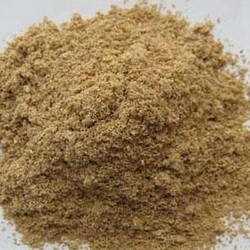


Rice Polish
info@agrawalimpex.com
agrawal.impex12@gmail.com


Copyright © Agrawal Impex. All Rights Reserved.
Website Designed By Sahaj Infotech

Supplier & Distributor of Rice Polish. Our product range also comprises of Soybean Meal, Ground Nut DOC and Distillers Dried Grain.
Rice-Bran
|
|
 |
Rice bran is a by-product of the rice milling process in which brown rice is converted to white rice. It is highly beneficial to human health because of the antioxidants and oils present in it. The rice bran is generally processed to extract the oil present in it that is mainly used for cooking purposes because of its low fat content. Once the oil is extracted the left product is de-oiled rice bran which has very less fat, low fiber content. The de-oil rice bran pallets are rich sources of valuable amino acids like methionine, cysteine & lysine and phosphorus and are the prime sources of food for fish, poultry and cattle.
A major rice bran fraction contains about 13% oil and 44.3% of highly unsaponifiable components. This fraction also contains gamma-oryzanol, beta-sitosterol and tocotrienol that help in lowering the levels of plasma contained in the lipid profile. It also contains a major amount of dietary fibers like beta glucan, gum and pectin. The oil present in the rice bran is a rich source of Vitamin E, Vitamin B, minerals and other essential acids.
|
India is one of the largest producer and exporter of rice in the world. The main staple diet of South India is Rice as lot of rice is grown in that region and very limited quantity of wheat. Rice comes in the field in the form of paddy. When it is milled, rice bran, a by-product of rice consisting of the outer layer of the kernels is obtained. Rice bran is further processed for its oil and meal. Rice bran oil is known for its nutritional superiority and better protection of heart.
|
|
Uses of Rice Bran:
Rice bran serves many important usages for both humans & animals as well for commercial purposes. The following are the various uses of rice bran:
|
|
Specification of Rice Bran:
|
|
Profat
|
16% min
|
Sand & Silica
|
5% max
|
Moisture
|
12% max
|
Fiber
|
12% max
|
